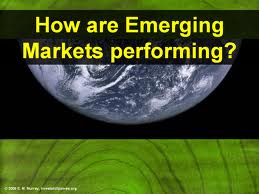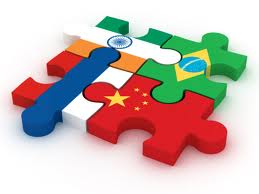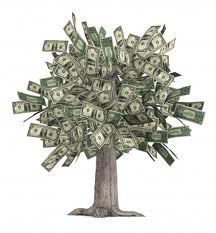 Investment Scenario
Investment ScenarioThe measures initiated in the Union Budget 2011-12 have endorsed sustainability of private investments in the Indian Economy that would take the GDP growth to 9 per cent in 2011-12. The measures that would help revive private investments include directions given to institutions like NABARD and SIDBI to provide financial assistance to the micro, small and medium enterprises (MSME), introducing ‘sugam’ to reduce the compliance burden of small tax payers falling within presumptive taxation, freeing small businesses (with turnover of upto US$ 0.132 million) from formalities of audit, further liberalisation of interest subvention on housing loans and creation of ‘India Microfinance Equity Fund’ of US$ 22 million.
Gregory Ko, ING Investment Management-Asia Pacific, has remained optimistic on investor sentiments in India for the coming fiscal in his recent interview. Considering robust economic recovery as the theme of investment, he believes that sectors including IT, metal and energy would show bright streaks of performance in the coming months.
A study by the marketing research firm Nielsen has stated that 18 per cent of the Indians have rated their individual finance as excellent and 66 per cent of them consider it to be good for the calendar year 2011. Confidence in the economic growth has made Indians optimistic about their personal finances, revealed the study.
Among the top 20 investment attracting states, Karnataka has emerged as most preferred destination with the highest share of 9.1 per cent in domestic investment plans in April-September 2010, as per ‘Associated Chambers of Commerce and Industry of India Investment Meter (AIM). Karnataka clocked an year-on-year (y-o-y) growth of 73.8 per cent and attracted investments of US$ 85.49 billion.
Uttar Pradesh acquired second spot with a growth of 75.5 per cent (y-o-y) attracting massive investment plans of US$ 45.14 billion during the period.
Availability of rich mineral resources like coal and ironore along with cheap manpower availability helped Jharkhand rank third on investment radar with total planned investments at US$ 44.03 billion having a share of 6.3 per cent in total investments during the reported period. Gujarat and Orissa stood at fourth and fifth position by attracting investment plans worth US$ 43.19 billion and US$ 42.10 billion, respectively during April-September 2010-11.
As per the AIM assessment report for corporate investments across states and sectors, total investment plans of India Inc increased significantly from US$1,753.7 billion in 2009 to US$ 2,221.4 billion during April-September, 2010.
In terms of sectoral analysis, the study shows that the power and services were the major sectors attracting investment in 2010.
A study undertaken by the Associated Chambers of Commerce and Industry of India (ASSOCHAM) has revealed that the first nine months of 2010-11 (April–December) have witnessed more than three-fold increase in value terms in the Merger & Acquisitions (M&A) growing from US$ 13.54 billion in the corresponding period to US$ 58.73 billion. The number of deals also rose to 222 from 129 during the same period, domestic ones being 103 (41.41 per cent) in number. The major mergers and acquisitions occurred in telecom followed by energy, metal & mining, pharmaceutical and BFSI sectors.
Even going by January 2011’s deals, the IT & IT-enabled services (ITeS) segment has emerged as the largest ranking sector in inorganic strategy. According to Grant Thornton’s January data, IT &ITeS tracked the highest in terms of value, with the industry investing US$ 1.2 billion in M&A over 12 deals. The sector also led the chart in terms of investment from private equity firms.
India Inc is expected to spend around US$ 95.47 billion on information and communication technology (ICT) by 2014, growing at a compound annual growth rate (CAGR) of 10.9 per cent, as per the research firm Gartner. In 2009, the spending on ICT stood at US$ 56.82 billion.
As per a study ‘Indian Domestic Market: A Robust Opportunity,’ by Zinnov Management Consulting domestic market is the easiest to penetrate for start-ups and takes the least time to break in, followed by other growth markets and developed markets. The drivers in the domestic market include the fast paced economic growth and the growing software market.
Meanwhile, the Confederation of Indian Industry-Business Confidence Index (CII-BCI) for January-March 2011 increased by 0.5 points to 66.7 per cent as compared 66.2 per cent in the previous quarter. The survey said the sectoral break-up reveals that BCI is highest for the primary sector followed by services and manufacturing.
 Investment initiatives
Investment initiativesAn empowered committee of the Punjab government has given approval to the following projects:
- A ring-frame spinning unit of J D Spintex at Samana at a cost of US$ 7.96 million.
- Gee EmmSpinfab’s project of ring spindle spinning unit in the Samana tehsil, at an investment of US$ 10.58 million.
- Likewise, the committee also gave approval for setting up of an agriculture mega industrial food park with an investment of US$ 28.6 million by the International Mega Food Park in Ferozepur district.
- SampuranAgri Venture’s agri mega project scheme for setting up of wasteland development project in Ferozepur district at a cost of US$ 13.66 million.
- The committee also approved a policy for integrated sugar complexes at the state border. Under the policy, a sugar complex would comprise of a mill with minimum capacity of 3,000 TCD, power generation unit of minimum 15 Megawatt (MW), a distillery of 30 kl.
Mr Rahul Khullar, Secretary, Department of Commerce, informed during the Special Economic Zones (SEZ) Board of Approval meeting held on November 18, 2010, that so far 580 formal approvals have been granted for setting up of SEZs out of which 367 have been notified. He further informed that over US$ 38.94 billion have been invested in the SEZs.
The Maharashtra Economic Survey 2010-11 said the state continues to attract highest number of industrial proposals, despite rising competition from other states, and generates maximum employment. The report said it was the favoured destination for industries because of better infrastructure, skilled human resources and stable social conditions. A total of 786 industrial projects, including FDIs with an investment of US$ 25.35 billion were approved and 2,25,000 people were employed during September 2009 to August 2010. During the same period, 36 projects with an investment of US$ 1.91 billion were commissioned that employed 9,458 people.
National Aluminium Company Ltd. (NALCO), India’s largest producer and exporter of alumina and aluminium, on Tuesday signed a Memorandum of Understanding (MoU) with the union ministry of mines, for the financial year 2011-12 with a projected higher production of 63 lakh tonnes of bauxite and 21 lakh tonnes of alumina from its captive mines and refinery Complex at Damanjodi.
Road infrastructure in four districts of Arunachal Pradesh– Changlang, West Kameng, East Siang and West Siang – is up for a boost as the ministry of Development of North Eastern Region (DoNER) has sanctioned funds worth US$ 15.38 million for development of road network in the districts.
A major factor buoying investments is robust consumption demand, with domestic consumption of items such as automobiles and consumer electronics pacing up the growth of industrial revival. Automobile and allied industries are witnessing major capacity addition. As per the Society of Indian Automobile Manufacturers (SIAM), India’s auto market grew at 32.69 per cent in 2010. Passenger cars grew by 32 per cent, utility vehicles grew by 20.82 per cent and multi-purpose vehicles grew by 50.58 per cent during April-December 2010-11.
India’s power sector needs investment of upto US$ 400 billion in five years to end-March 2017, said P. Uma Shankar, Secretary, Union Ministry of Power. India plans to add 62 gigawatts of generation capacity, using mainly coal, in the five years to end-March 2012.
India could attract as much as US$ 169 billion in clean power project investments in the next decade, according to a report released by The Pew Charitable Trusts.
Furthermore, the natural gas industry has entered a high investment phase to create infrastructure to handle increasing volumes.
Mahanagar Gas Ltd (MGL), a natural gas distribution company, plans around US$ 219.00 million capital expenditure (capex) for expansion over the next five years, said V C Chittoda, Managing Director, MGL.
Hindustan Petroleum Corp Ltd (HPCL) plans to invest US$ 2.88 billion to almost double the capacity of its Vizag oil refinery in Andhra Pradesh to 15 million tonnes a year by 2013-14.
State-run GAIL plans a capex of US$ 8.89 billion for the next four-years for various undertaking various projects including sourcing of LNG.
Significantly, the central government is envisaging an investment of US$ 21.89 billion in the food processing industry by 2015. The government plans to attract the private sector and financial institutions to set up mega food parks and cold storage chains. An Expression of Interest (EoI) has been floated for setting up a total of 30 mega food parks across India by end of the 11th Five Year Plan (2007-2012), said Union Minister for Food Processing Industries, Mr Subodh Kant Sahai, on the sidelines of a CII Retail Summit. The allocation for the 11th Five Year Plan is US$ 1.09 billion with a plan of setting up 30 mega food parks. The Centre is also setting up cold storage chains. Ten mega food parks are already sanctioned, of which six are operational.
Further, investment in the infrastructure sector is expected to almost double at US$ 1,025 billion in the 12th Plan, compared to US$ 514 billion in the 11th Plan, according to the Planning Commission. Of the US$ 1,025 billion, 50 per cent is expected to come from private sector, whose investment has been 36 per cent in the 11th Plan.
India’s economy may be entering a new investment cycle going by expansion plans across industry sectors, a move that could create more jobs, boost demand for machinery and supporting infrastructure, and portend a strong pick-up in the growth momentum in the years ahead.
Electrical products maker Havells India has invested US$ 26.55 million in doubling the capacity of its cable and wire plant and expects revenue of US$ 398.26 million from the segment by FY’12.
Sumber : http://www.ibef.org/artdispview.aspx?in=16&art_id=28446&cat_id=595&page=2





